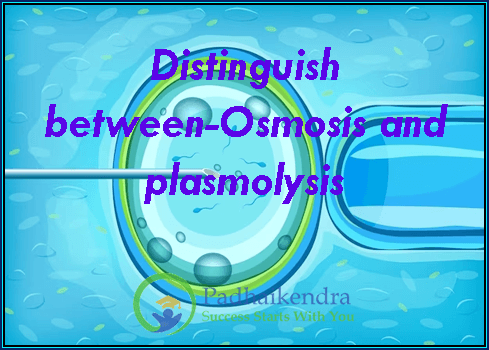Osmosis is the process of movement of solvent (usually water) molecules from a region of higher water potential (lower solute concentration) to a region of lower water potential (higher solute concentration) across a selectively permeable membrane, while plasmolysis is the shrinking of the protoplast of a plant cell due to the movement of water out of the cell.
The main differences between osmosis and plasmolysis are:
- Cause: Osmosis is caused due to the difference in solute concentration on either side of the selectively permeable membrane, while plasmolysis is caused due to the loss of water from the cell.
- Effect: Osmosis causes the movement of water across the membrane, while plasmolysis results in the shrinking of the cell.
- Occurrence: Osmosis occurs when there is a difference in solute concentration across the membrane, while plasmolysis occurs when the plant cell is placed in a hypertonic solution.
- Reversibility: Osmosis is reversible, and the cells can regain their original shape when placed in a hypotonic solution. Plasmolysis is also reversible, but the cells may not regain their original shape if the process has been severe.





